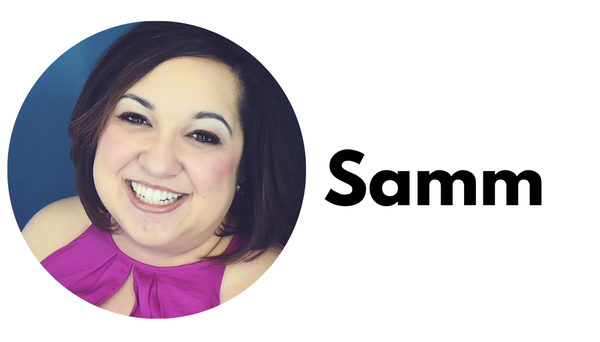Dear HRart workers,
Today I’m going to hand the microphone over to a student of mine who has been writing some very potent essays. This topic is something we need to hear and we need to share. I hope you enjoy the following essay by Grace Carlsen: “Can We Please Move Away From Diversity and Towards Inclusion?”
I am sick of diversity.
I am sick that employing a diverse set of employees is considered enough.
I am sick of diversity being cool.
I am sick of thinking that diversity is enough.
As it was put perfectly by Verna Myers,
“Diversity is being invited to the party; inclusion is being asked to dance.”
Over the past few years, America has been growing in efforts to heal itself. Healing from the pain of having to be silent in order to survive. Specifically, we are trying to heal from our experiences within the workforce. There is this belief that companies live within a bubble. Organizations are not affected by the events that occur in the world around them. Even though companies act like this, they have been forced to speak up and take a stand for their employees. Over the past year, companies have stepped forward and showed how they have been updating their Diversity and Inclusion Mission Statement. Long strides are being made in order to have diversity integrated to meet the communities needs. Although, there is this misconnection in recognizing the difference between diversity and inclusion.
Don’t get me wrong, diversity has its purpose. The action of diversity includes the practice of including others from a wide range of backgrounds and experiences. And? What else? What diversity does not include is the accessibility to opportunities while celebrating the wide range of backgrounds that we see in inclusivity. Having a diverse employment does not mean that the efforts are put in to make others feel accepted and recognized for the viewpoints that they bring to the table. Like Myers stated, you can be invited to the party, that does not mean anyone would want to talk to you. At this point, companies, and especially their HR department, need to focus on their inclusivity “how” efforts. We don’t need diversity efforts, we’ve moved past that. We need inclusion. If a company can’t wrap their heads around this idea of inclusion, they are losing potential candidates that want to be respected.
In a recent study, it was found that 83% of women and 67% of men believe that workplace culture is the major factor that will help them thrive. From this factor, diversity and inclusion will be affected because they are embedded within the culture. If organizations do not implement diversity and especially inclusion, they will experience higher rates of employee turnover. A study goes far to say that if organizations implement DEI (diversity, equity, and inclusion) incentives, they will experience a 22% lowered turnover rate. Not only for marginalized groups, but a decreased turnover rate will affect all employees no matter their social identity leading to less conflicts and a positive work environment. At the end of the day, this is what employees are looking for.
Over the course of the past few months, I had the opportunity to speak with professionals all over the country to hear their views on human relations practices within their organization. Through these conversations, I heard underlined tones of hopelessness, pain, confusion, and denial. From speaking with one professional, they were able to discuss their demands surrounding DEI. While the discussion of diversity being misused within the workplace was recognized, DEI being overused was also associated. It has come to a point where diversity is not relevant unless it’s being shown through inclusion. The effects of diversity can be showcased through the implementations of inclusion. To do so, companies need to utilize what best fits the employees needs. We need to ask ourselves what the company has already done and what needs to be completed. Is inclusion translated through the job description? What employee resource groups (ERG) are implementing inclusivity? How do employees belong? The overutilization and misuse of diversity can be extended to equality. Everyone experiences their own level of oppression and privilege. No two people are going to have the same experiences. While one employee may feel the effects of privilege, another is going to be oppressed. Instead of thinking that we need to think in the mindset of equality, we need to move more towards equity. As stated above, companies don’t have the right to have a bubble surrounding them that allows them to treat their employees how they would like. As simple as it may sound, employees want humility. Is that too much to ask?
Diversity and inclusion isn’t supposed to be “cool”. Change is more than a post or a like on social media, it is the action of collaborating with others to create an environment that is demanded to survive. It is fantastic that companies are implementing an inclusive employment role and updating their Diversity and Inclusion Mission Statement. Although, are they implementing these mission statements to treat people like they should or are they simply doing it because they have to. Ultimately, we need to ask who will be hurt by this at the end of the day?
About Grace: Grace Carlsen is a current senior at York College of Pennsylvania preparing to graduate in May. As a Human Resource Management major, her focus in HR is in employee relations, DEI initiatives, and recruitment. In the spring, Grace was the Research Intern at The HRart Center. Grace is interested in DEI to help companies better meet the needs of employees and to respect the perspectives of employees.
Thank you, Grace, for your perspective. As we continue to say here at The HRart Center, now is the time to rethink the new workplace and inclusion must be embedded into our workplaces in order for them to thrive.
Sincerely,

p.s. This blog post was adapted from the From the HRart fortnightly newsletter. I invite you to subscribe!
Cover Photo edited from photo by Tim Mossholder






